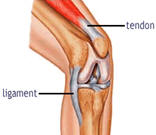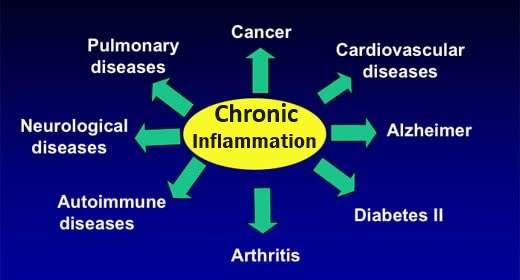Arthritis - crippling joint pain and stiffness

Characteristics
Arthritis is characterized by pain, inflammation, and joint stiffness leading to a reduced range of mobility and sometimes deformity. Usually due to degradation of connective tissue (mainly cartilage) in joints. particularly affecting:
- Weight-bearing joints. Eg. hips, knees, spine, ankles, feet
- Joints with frequent movement. Hands, fingers, thumbs, arms, neck
Progresses slowly over the years. Can be exacerbated with injury or by repetitive overworking of joints; better to deal with arthtitis early on, since it is difficult to repair cartilage once the damage is done

Types of arthritis
There are more than 100 different specific types of arthritis, the most common being:
- Osteoarthritis (OA) a.k.a. degenerative arthritis. Involves the wearing down of protective / cushioning cartilage on the ends of a bone, changes in joint bones, deterioration of tendons and ligaments, and can also involve some inflammation of the joint lining (synovium) – typically as a consequence of aging, trauma or obesity. This is the most common type of arthritis, commonly affecting the joints of hands, knees, hips, spine and big toes. OA is the main cause of disability in older people.
- Rheumatoid arthritis (RA). An autoimmune arthritis causing inflammation of not only the joints, but also several other body systems, including internal organs, blood vessels, skin, eyes and lungs. Particularly affects the joint lining (synovium), inducing painful inflammation that can lead to bone erosion and joint deformity.
- Juvenile RA
- Fibromyalgia
- Bursitis
- Lupus
- Gout

Causes of arthritis
Arthritis can be caused by trauma, wear and tear or uncontrolled inflammation
In the joint – Eg. OA and RA
Systemically affecting the internal organs. E.g. In RA
In the surrounding ligaments, tendons or muscles – E.g. fibromyalgia
Ligament: surrounds and supports each joint, connects bone to bone, and prevents excessive movement.
Tendon: attaches muscle to bone on each side of joint

Some Differences between RA and OA | |
| Rheumatoid Arthritis (RA) | Osteoarthritis (OA) |
| Tends to affect middle joints of fingers and where fingers attach to hand | In the hand, OA most commonly affects the 1st and 2nd joints of the thumb (study published Apr.2011 in “Rheumatology), also joints at the ends of the fingers |
| Usually same joints are affected symmetrically on both sides of the body | Symmetry of affected joints on both sides of the body does NOT usually occur in OA |
| Joints often hurt for longer than 45 minutes after getting out of bed | Joints may be stiff in the morning, but typically feel better in about 20 minutes |

Some treatment choices for arthritis
- DMSO (for pain)
- Transdermal Magnesium Chloride
- Anti-inflammatory Essential Fats
- Pulsed Electromagnetic Field (PEMF) Therapy
- LDN – For rheumatoid arthritis
- Rath-Pauling Therapy – strengthens body’s collagen / cartilage
- Tart cherry juice
- Chondroitin (a compound found in joints, its supplementation particularly used in osteoarthritis to supposedly restore cartilage. However, research results are extremely mixed on its effectiveness).
- Dosing of oral chondroitin supplementation in studies conducted in osteoarthritis ranges from 200 to 400 mg 2-3 times daily (or once daily at 800 to 1,200 mg). Higher doses do not appear to improve efficacy. It may take several weeks before full effect is achieved for osteoarthritis.
- Some say that chondroitin is only effective if injected into the joint













